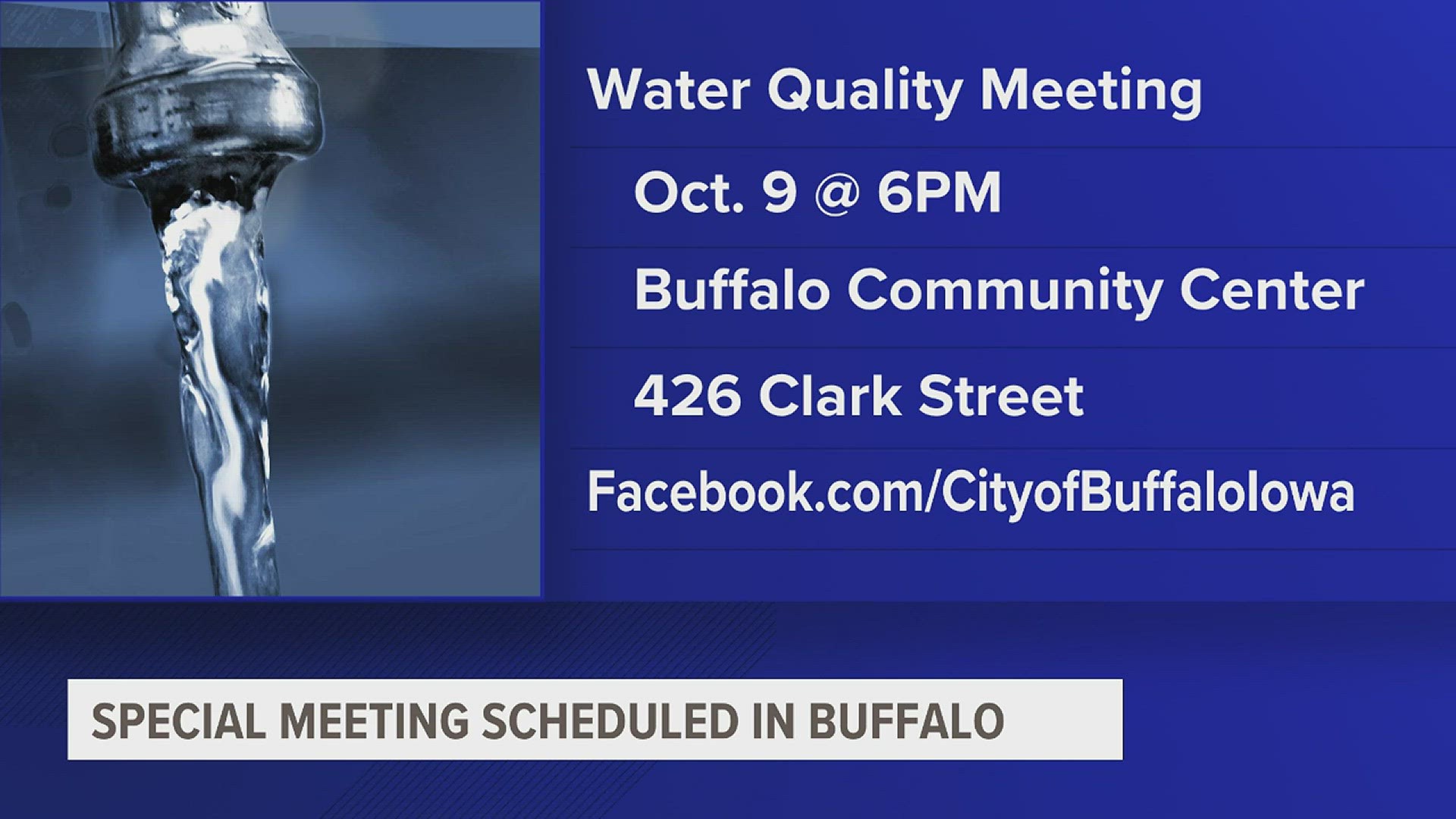BUFFALO, Iowa — Editor's note: Third quarter PFOA levels for Well #1 were written as 81.0 PPT. They are actually 8.1 PPT.
Buffalo's city council will hold a special meeting with residents to discuss PFAS (also known as "forever chemicals") contamination in the city's primary well on Monday, Oct. 9 at 6 p.m.
The meeting, to be held at Buffalo Community Center at 426 Clark St., will allow time for questions from residents.
Ahead of the meeting, Public Works Director Josh Ferkel provided information on water testing and sourcing in a press release.
Well #1, drilled in 1958 to a depth of 405 feet, is Buffalo's primary well and typically runs all year without needing assistance from other water sources. The city tests the well regularly for contaminants such bacteria, lead and harmful chemicals.
The city began quarterly testing for PFAS in 2023, as required by the Iowa Department of Natural Resources. Buffalo sent samples from Well #1 to a third-party laboratory. Their tests can't detect PFAS below 2.0 parts per trillion (PPT). Any PFAS levels below 4 PPT will not trigger a health advisory.
Test results show levels for two different types of PFAS, PFOA and PFOS.
Here are the PFAS results for Well #1:
- First quarter, reported Mar. 14: PFOA 3.1 PPT, PFOS less than 2.0 PPT
- Second quarter, reported May 10: PFOA 2.8 PPT, PFOS less than 2.0 PPT
- Third quarter, reported Aug. 29: PFOA 8.1 PPT, PFOS 6.0 PPT
Before the third quarter results were reported, Well #1 was taken out of service Aug. 24 due to a burnt-up pump motor. After extensive testing, the city found the well was being exposed to contaminants not normally found in groundwater.
The well was inspected with a specialized camera, which helped the city determine that the well needed grouting and an 8-inch metal casing installed. Buffalo's city engineer began the construction permit process that needs to be approved by the Iowa Department of Natural Resources before the metal casing can be installed.
While Well #1 was out of service, the city tested its emergency backup well, Well #2, and put it in service Aug. 25.
Well #2 was drilled in 1975 to a depth of 480 feet with grouting. It has discolored water as a result of high iron levels. The city has submitted samples from Well #2 for additional PFAS testing and will share results when they become available.
The city will decide whether to drill a third well or investigate capping off Well #2 below 400 feet to reduce iron levels. The well's high iron levels could be a result of its depth, as similar wells in the area don't have iron levels as high.
If PFAS continues to be detected in Buffalo's wells, systems can be added to Buffalo's water plant to remove them.
Watch more news, weather and sports on News 8's YouTube channel

